Eurail Seat Reservations: Essential Routes, Costs & Pro Tips
So, you’ve got a Eurail Pass and you’re dreaming of spontaneous train-hopping across Europe. Well, hang on. Plenty of high-speed, night, and busy international trains demand an extra seat reservation. Skip that, and you might be standing—or worse, left on the platform.
I’ve been burned before. Routes like London–Paris on the Eurostar or Paris–Barcelona on the TGV? They can sell out weeks ahead, no joke. Even when it’s not strictly required, a reservation can save you from a long ride in the aisle, hugging your backpack. The real trick is figuring out which trains need reservations, which don’t, and how to score the best seats without wrecking your budget.
Table of Contents
- Key Takeaways
- Understanding Eurail Seat Reservations
- What Is a Eurail Seat Reservation?
- Mandatory vs Optional Reservations
- Seat Reservation Policies by Train Type
- Which Routes Require Eurail Seat Reservations?
- High-Speed Train Routes
- Night Train Routes
- International Connections
- Popular Scenic and Seasonal Routes
- How to Check and Book Seat Reservations
- Using the Eurail App and Rail Planner
- Booking via Eurail Website and Booking Tools
- Direct Booking with Railway Carriers
- In-Person Reservations at Train Stations
- Costs, Fees, and Money-Saving Tips
- Typical Booking Fees and Supplements
- Price Differences by Route and Train Type
- Avoiding or Reducing Reservation Costs
- Eurail Seat Reservations with Different Passes
- Eurail Pass vs Interrail Pass
- Special Considerations for Pass Holders
- Managing Changes, Delays, and Refunds
- Exchange and Refund Conditions
- Handling Train Delays and Compensation
- Frequently Asked Questions
- Which European train routes mandate seat reservations for Eurail pass holders?
- What is the process for reserving a seat on a train when traveling with a Eurail pass?
- Are there any specific trains or routes where seat reservation is highly recommended for Eurail pass users?
- How can one reserve a seat on the Eurostar using a Eurail pass?
- What are the steps to reserve a seat online for a journey with a Eurail pass?
- Does Deutsche Bahn (DB) require seat reservations for travelers with a Eurail pass?
- Book Your Dream Experience
- More Travel Guides
Key Takeaways
- Some trains want a seat reservation on top of your Eurail Pass
- High-speed routes and popular lines book up fast
- If you know when and how to book, you’ll save time, stress, and cash
Understanding Eurail Seat Reservations

When you’re rolling with a Eurail Pass, sometimes you can just jump on a train. Other times, you’ll need a seat reservation, or you’re not getting on. That bit of knowledge can save you a pile of money and hassle.
What Is a Eurail Seat Reservation?
A Eurail seat reservation is a separate booking that gets you a specific seat. Your pass is your golden ticket onto the network, but the reservation locks in your spot on a particular train and time.
You’ll usually see a seat number and carriage. On night trains or those fancy scenic routes, you might reserve a sleeper or even a panoramic seat.
High-speed, international, and overnight trains love reservations. Rail companies want to manage demand, especially on busy lines like London–Paris (Eurostar) or Paris–Barcelona (TGV).
If you show up without one? They might not let you board, or you could end up wedged in the aisle for hours. Not a great time.
Mandatory vs Optional Reservations
Some trains make reservations mandatory. No booking, no ride—your pass alone isn’t enough. Think Eurostar, TGV, AVE, and most night trains.
Others offer optional reservations. You can risk it and hop on, but you might not snag a seat, especially in summer. I once stood for two hours on a German ICE, clutching my bag and questioning my life choices.
Here’s a quick breakdown:
| Reservation Type | What It Means | Examples |
|---|---|---|
| Mandatory | Must book before boarding | Eurostar, TGV, AVE, most night trains |
| Optional | Recommended but not required | Many ICE, InterCity, and regional trains |
| Not Needed | Just hop on with your pass | Most local/regional trains |
When you’re unsure, check the Eurail timetable or app before you go.
Seat Reservation Policies by Train Type
High-speed trains almost always want reservations. Cross-border routes like Amsterdam–Paris or Milan–Zurich? Book ahead or you’ll miss out.
Night trains need both a reservation and often a supplement for a sleeper. The sooner you book, the more options you’ll have.
International trains between big cities sometimes set aside just a handful of seats for Eurail Pass holders. Even if the train isn’t sold out, those pass-holder spots might be gone.
Regional trains are the chillest—no reservations, no extra fees. They’re slower, but honestly, they’re often more scenic and let you keep your plans flexible.
If you’re piecing together different train types, expect to juggle both reserved and reservation-free rides.
Which Routes Require Eurail Seat Reservations?
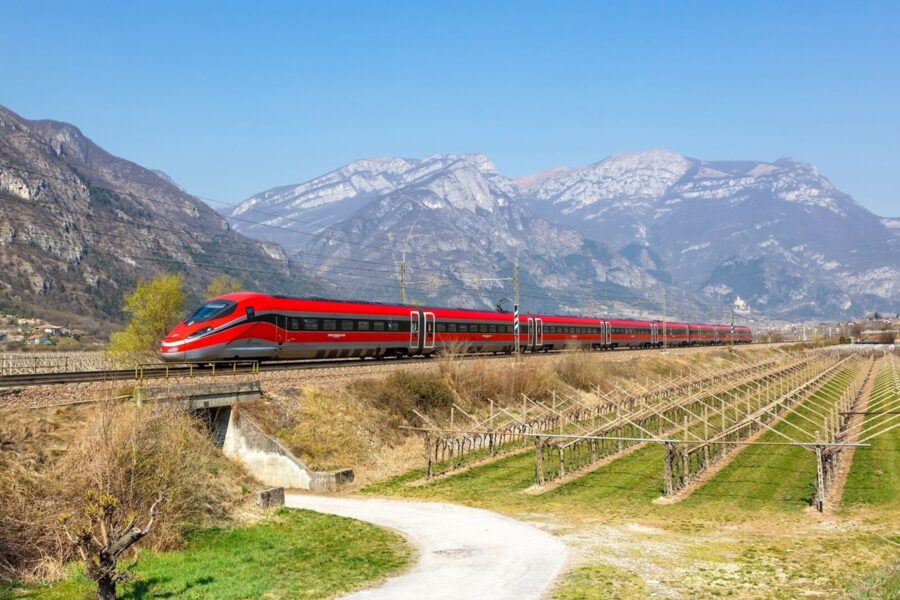
Some trains let you hop on with just your pass, while others slam the door unless you’ve got a seat reservation. The rules switch up depending on the train, the route, and sometimes even the season.
High-Speed Train Routes
Most high-speed trains in Europe want a seat reservation. That’s your TGV in France, AVE in Spain, and Frecciarossa in Italy. They run fast and direct between big cities, so they fill up—especially in summer or around holidays.
If you’re eyeing the Eurostar between London, Paris, or Brussels, book early. Same for Deutsche Bahn’s ICE on popular lines like Frankfurt to Amsterdam.
Reservations aren’t usually expensive, but they guarantee a seat and sometimes perks like power outlets or Wi-Fi. On busy travel days, I’d say it’s worth it—just like you’d book ahead for a day trip or a concert.
Night Train Routes
Nearly all night trains in Europe require reservations. You pick your sleeping compartment, couchette, or just a reclining seat when you book.
The Nightjet routes by Austrian Railways—like Vienna to Venice or Zurich to Berlin—are classic examples. In France, Intercités de Nuit connects Paris to the south.
Space is limited, so night trains can sell out days or even weeks ahead. If you’re traveling in peak season, book as soon as you know your plan. Trust me, you don’t want to get stuck with a slow daytime train instead.
International Connections
Cross-border trains tend to have stricter reservation policies. For instance, Thalys between Paris, Brussels, and Amsterdam always requires a reservation. Same with the Eurostar and many TGV lines crossing into Spain or Italy.
Even some regional cross-border trains—like those between Germany and Switzerland—might need a seat booking if they’re busy. Always double-check the timetable for your specific train; the rules can change even on the same route.
If you’re lining up train rides with guided tours, coordinate your reservations early so you don’t end up scrambling.
Popular Scenic and Seasonal Routes
Tourist magnets like the Glacier Express in Switzerland require reservations, even if they’re not high-speed. There’s a fee on top of your pass, but the views? Worth it.
In peak summer, trains along the French Riviera, Italian coast, or through the Alps get packed. Festival or ski resort routes can be the same—book ahead.
Even if a reservation isn’t strictly required, sometimes it’s just worth the peace of mind. No one wants to stand in the aisle while the scenery whips by.
How to Check and Book Seat Reservations
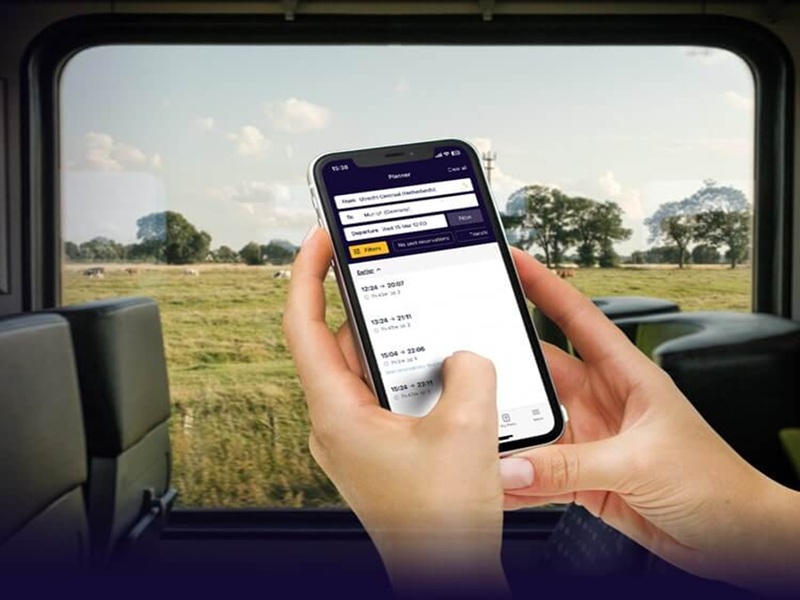
With a Eurail Pass, some trains let you stroll on, others stop you at the door if you don’t have a reservation. The key? Know which is which, check before your trip, and book early when you need to.
Using the Eurail App and Rail Planner
The Rail Planner app is a lifesaver. You can search routes, see timetables, and even filter for “no reservation needed” if you want to dodge extra fees.
It’ll show you train types—high-speed, night trains, whatever—that almost always require booking. I’ve used it on jam-packed summer routes, and it’s saved me from standing the whole way.
The app doesn’t handle every reservation, but it’ll direct you where to go. If you can’t book in-app, you’ll get instructions for the right railway site or booking tool.
Pro tip: download timetables for offline use. When you’re stuck in a rural station with no Wi-Fi, you’ll thank yourself.
Booking via Eurail Website and Booking Tools
If you’ve got your Pass, the Eurail website’s reservation booking tool is pretty straightforward. Log in, search your train, and you’ll see if a reservation is a must or just a suggestion.
Most of the time, you can pay and confirm your seat right there. The system assigns seats automatically. If you’re traveling with friends, double-check before paying so you’re not scattered all over the train.
Prices vary—a Eurostar seat can sting compared to a regional train, and sleeper cabins are a whole other budget. The site shows you prices before you commit, plus a small booking fee per seat.
All your reservations show up in your account. You can pull them up on your phone, or print them if you need a paper ticket.
Direct Booking with Railway Carriers
Sometimes, it’s just easier—or cheaper—to book directly with the railway carrier. Deutsche Bahn, SNCF, and ÖBB all let you reserve online. HappyRail can help with some international routes, too.
Booking direct can save the day if Eurail’s tool says “sold out” but the carrier still has passholder seats. I’ve snagged a Paris–Barcelona spot this way more than once.
Each carrier does things their own way. Some let you pick your seat, some don’t. Some want a printed ticket, others are fine with digital. Always check before you finalize.
And hey, sometimes you’ll find a better deal—especially if you’re flexible on timing.
In-Person Reservations at Train Stations
Already traveling? You can make seat reservations at major train stations. Big stations usually have an international ticket desk. The staff can check availability across several rail networks.
This works great for last-minute changes. I once ditched a high-speed route for a scenic slow train in Switzerland just by chatting with the ticket agent.
Bring your Eurail Pass and know your preferred train number and time. It’ll speed things up and avoid confusion.
Some stations tack on a small service fee, and in busy seasons, popular trains might be full. If that happens, the staff can usually find you a detour—sometimes a hidden gem you’d never have found.
Costs, Fees, and Money-Saving Tips
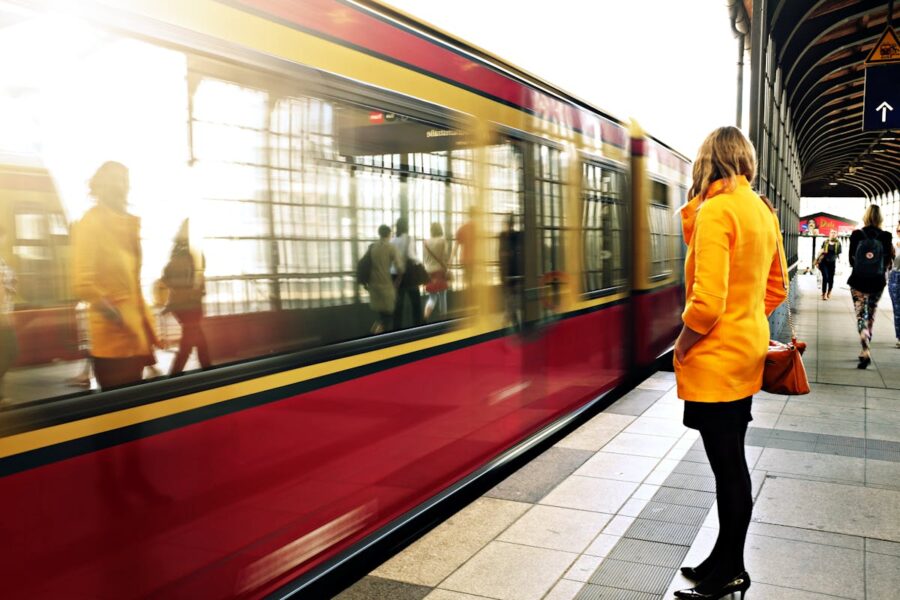
Seat reservation costs can add up fast if you’re not watching. Some routes are cheap, others—especially high-speed or night trains—can take a bite out of your budget. If you know where fees hit and how to avoid them, you’ll save cash and headaches.
Typical Booking Fees and Supplements
Most standard seat reservations in Europe run €3–€10 for Eurail Pass holders. That’s for regular daytime trains where reservations are optional.
High-speed lines like France’s TGV or Spain’s AVE usually cost €10–€30. Night trains, especially couchettes or sleepers, can jump from €15 for a basic bunk to over €100 for a private cabin.
Some cross-border trains add passholder supplements on top of seat fees. For example, Austria to Italy on a Railjet adds a €10–€15 surcharge, plus an optional €3 seat booking.
Traveling with luggage? Reserve early so you can snag a seat near the racks for your travel gear.
Price Differences by Route and Train Type
Reservation prices bounce all over the place depending on country and train type.
In Austria or Germany, plenty of domestic and regional trains don’t require reservations at all, and if you want one, it’s usually just €3–€5. France and Italy’s high-speed lines? Almost always required, and higher fees during peak times.
International routes can get weird. Berlin to Prague? Optional and cheap. Paris to Barcelona? Mandatory and pricey. Private operators like RegioJet have their own set fees—often lower, but still required for passholders.
Even on the same route, train type matters. A Vienna–Zurich daytime Railjet might cost €3 to reserve, but the Nightjet sleeper on the same route will cost much more thanks to those bed or couchette charges.
Avoiding or Reducing Reservation Costs
Want to skip extra fees? Stick to trains that don’t require reservations. Scenic regional routes usually let you just hop on with your pass.
I love planning travel days around the expensive trains. Use your pass for high-speed lines that require bookings, then wander around smaller towns the next day on regional trains—no reservation, no travel day used.
Sometimes, booking right from the national railway saves you a few euros compared to third-party sites. Austrian Railways often undercuts German Railways on shared routes. It’s a bit of a game, honestly.
If you’re not locked into a schedule, travel outside the rush. Midday and midweek trains are quieter, so you can usually skip reservations—more freedom, less cost, and you get to change your mind if you spot a cool town along the way.
Eurail Seat Reservations with Different Passes
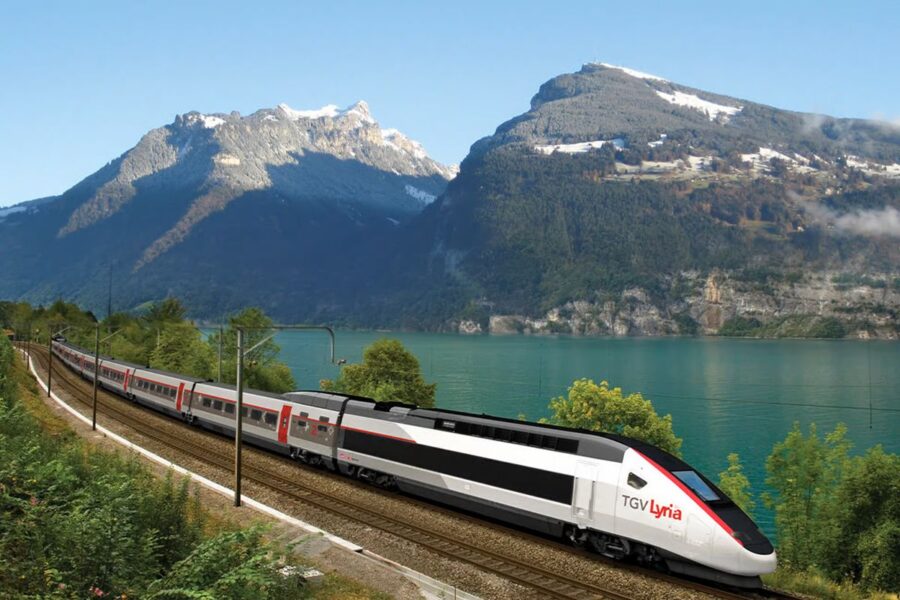
Whether you’re flashing a Eurail Pass or an Interrail Pass, the trains don’t care which one you’ve got—what matters is how you snag a seat reservation. Some routes are reservation-free, others won’t even let you board without one.
Eurail Pass vs Interrail Pass
Eurail Pass is for non-Europeans. Interrail Pass is for Europeans. That’s it, really.
Once you’re on board, both passes cover the same networks, operators, and reservation fees. No secret perks hiding anywhere.
Train companies set the reservation rules, not Eurail or Interrail. If a French TGV wants €10 from pass holders, you’ll pay it—no matter which pass you’re holding.
Some high-speed and night trains require reservations, period. You can’t just show up and hope for the best. On regional trains, reservations are usually optional, which is handy if you want to sit with friends or avoid standing.
If you’re bouncing between countries, check each rail operator’s policy. Booking with the national railway site sometimes shaves a few euros off compared to third-party platforms.
Special Considerations for Pass Holders
Pass holders sometimes get tripped up by little extra costs. For instance, some cross-border trains between Austria and Italy tack on a “passholder surcharge” besides the seat fee. It’s not a dealbreaker, but it can sneak up on you.
Night trains can be a steal with a pass, but you’ll still pay for your chosen seat or bed. Sleeper compartments sell out fast—book early if you want to actually sleep.
Dragging a big bag? Think about luggage storage at stations. It’s so much easier to explore during a layover when you’re not wrestling a suitcase over cobblestones. I’ve made that mistake enough times.
Some smaller private operators (like Regiojet) require reservations even for short trips. It’s easy to miss that detail, so always double-check your train before you roll up to the platform.
Managing Changes, Delays, and Refunds
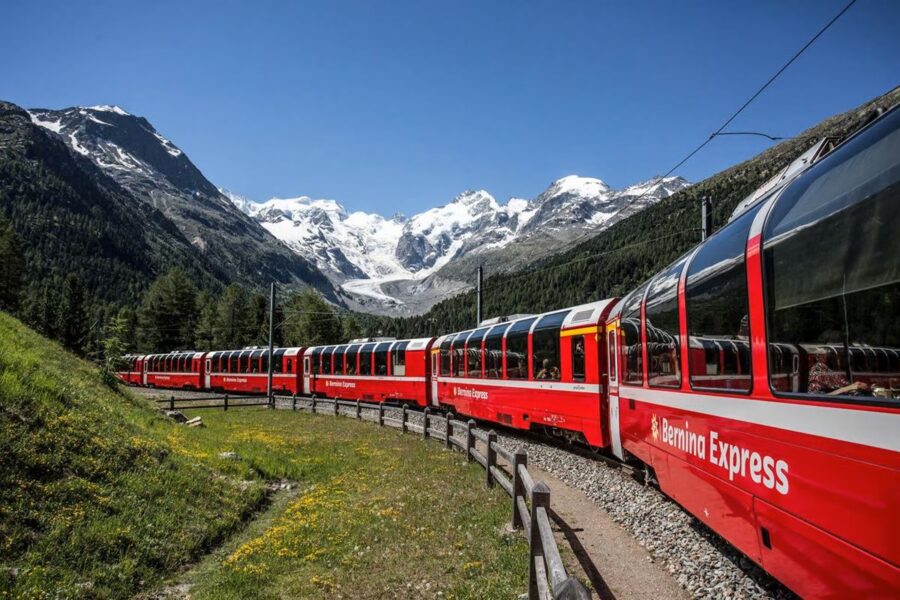
When you travel with Eurail seat reservations, you’ll want to know how to handle last-minute changes, what happens if your train is delayed, and when you can get your money back. The rules can be strict, but there are a few exceptions worth knowing about that might save you time and frustration.
Exchange and Refund Conditions
Most Eurail seat reservations are non-refundable and non-exchangeable after you book them. That’s the reality, especially for high-speed and international trains. If you change your mind or miss your train, the ticket’s usually a lost cause.
Some carriers let you cancel within a short window—often 24–48 hours before departure. For paper tickets, you might have to physically mail them back to get a refund. Not convenient if you’re already on the move.
If you booked through the Eurail self-service tool, the booking fee (about €2 per passenger per train) doesn’t come back. Check the Reservations Overview in your Eurail account to see if your reservation qualifies for a refund or change. There’s a refund request button at the bottom of the reservation details.
If you’re not sure about your plans, pick routes or trains with flexible reservation policies. It might cost a bit more upfront, but it can save you from losing the whole fare later.
Handling Train Delays and Compensation
If your train is delayed, canceled, or you miss a connection thanks to another train from the same company, you might get compensation. This is separate from the refund policy for unused reservations.
I’ve had a reservation refunded after a French TGV canceled last minute. The key? I booked directly through Eurail and the cancellation was confirmed by the carrier.
Each company sets its own rules for delays. Some offer partial refunds or vouchers if you’re delayed more than 60 or 90 minutes. You’ll need proof—get a delay confirmation from staff if you can.
You can file a claim through Eurail’s customer service or the train company’s process. Keep your reservation details handy, and jot down any announcements or paperwork during the delay.
If you end up on an unreserved train instead, hang onto receipts for any extra costs. Sometimes Eurail or the carrier will reimburse you for reasonable expenses, but honestly, it’s not guaranteed.
Frequently Asked Questions
Some European trains let you hop on with just your Eurail pass, but others won’t even let you board without a seat reservation. The tricky part is figuring out which routes require what, and how to actually book those spots before they’re gone.
Which European train routes mandate seat reservations for Eurail pass holders?
You’ll need a reservation for most high-speed trains in France, Italy, and Spain. That means TGV, Frecciarossa, and AVE.
International routes like Paris–Amsterdam, Milan–Zurich, and Barcelona–Paris also require one. Night trains, like the Nightjet, are another must-reserve.
What is the process for reserving a seat on a train when traveling with a Eurail pass?
You can book through the Eurail Reservations Service online, but that’s not your only option. Some national railway websites let you reserve as a pass holder, too.
Already in Europe? Major station ticket counters can handle it. I’ve even booked over the phone when the website was acting up.
Are there any specific trains or routes where seat reservation is highly recommended for Eurail pass users?
Even when it’s optional, I’d definitely book ahead for busy summer routes like Amsterdam–Berlin or Florence–Venice. Those fill up crazy fast, especially on weekends.
Holiday periods are another crunch time. I once tried to wing it on a Rome–Florence train in December and stood in the café car for two hours. Not my best plan.
How can one reserve a seat on the Eurostar using a Eurail pass?
Eurostar between London, Paris, and Brussels has a limited number of pass-holder seats. Book those as soon as you know your travel dates.
You can reserve through Eurail’s site or by calling Eurostar directly. Prices for pass-holder reservations are higher than for most other trains, so brace yourself.
What are the steps to reserve a seat online for a journey with a Eurail pass?
Log into your Eurail account and search for your train in the reservation tool. Pick the pass-holder fare, then choose your seat if the system lets you.
You’ll get a PDF ticket or a paper slip, depending on the train. Keep it handy—conductors will want to see both your pass and the reservation.
Does Deutsche Bahn (DB) require seat reservations for travelers with a Eurail pass?
Most DB trains in Germany don’t make you reserve a seat. You just hop on and grab whatever’s open.
But here’s the thing—on those busy ICE routes (think Berlin–Munich), I’d honestly cough up the few extra euros and snag a reservation. I’ve played that awkward game of musical chairs more times than I care to admit when I tried to wing it.



